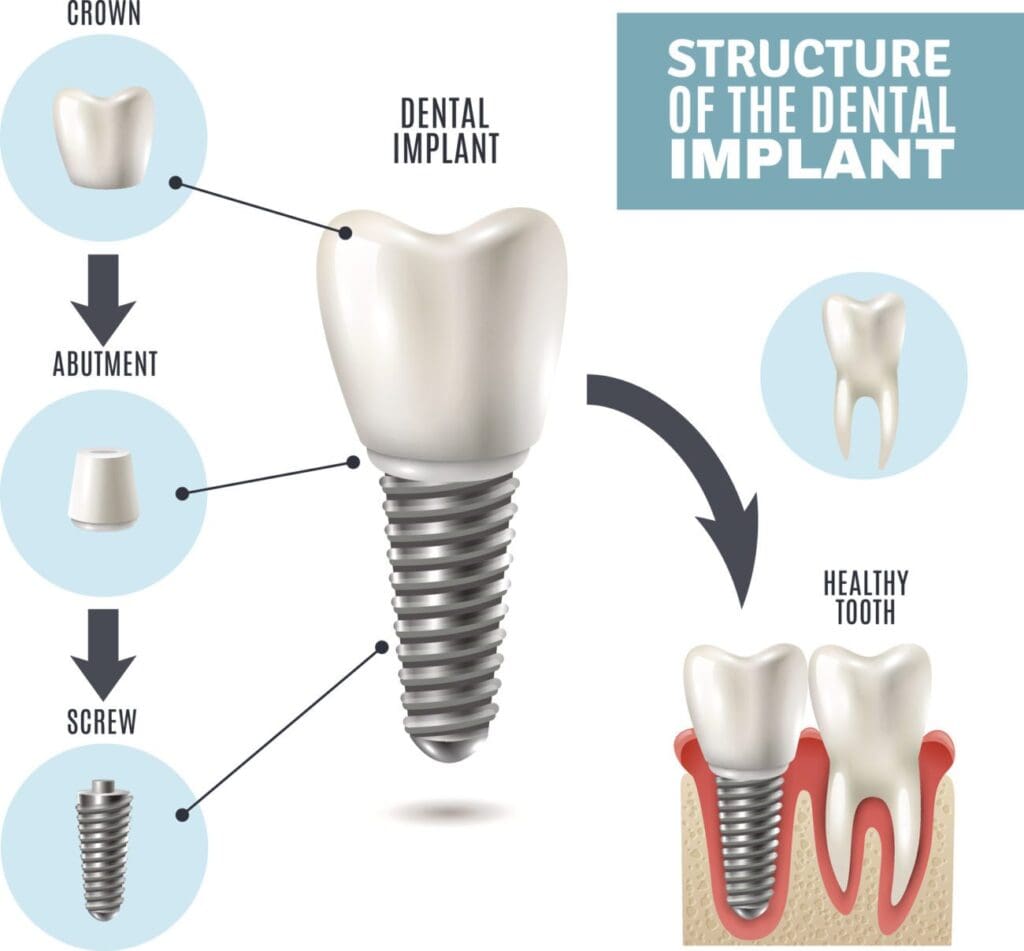Many patients believe it is not necessary to replace a single missing tooth, especially if it is not visible when they smile. Doing nothing is actually detrimental to the oral health of the patient leading to bone loss, teeth shifting, and difficulty cleaning surrounding teeth. Common causes of tooth loss are severe tooth decay and gum disease as well as trauma or injury.
If you have a missing or damaged tooth that will require extraction, Claremont Dental Institute located in Claremont, CA offers a number of treatment options that can replace it. Choosing the right treatment can be an overwhelming decision. Dr. Steve Fountain will review each option with you to help you make the right decision.
We often encourage our patients to replace their missing tooth with a dental implant-supported crown because it is the only option that functions like a natural tooth. Below, we have laid out a comparison of the available treatment options to help you make an informed decision about which solution is best for you.

Dental Implant-Supported Crown
A dental implant is actually a screw-like metal post that the dentist surgically implants into the jaw bone. It will support a dental crown and also replaces the missing tooth root. One of the main reasons this is the best option is because the implant will stimulate the bone (just how the tooth root did) and prevent bone loss.
Once we place the titanium post, it will need about three to six months to completely fuse with the surrounding bone. The next step is to attach a small piece we call an abutment. This will only require an additional few weeks of healing then the dentist will attach the dental crown.
This solution will feel and function like a natural tooth allowing you to eat, brush your teeth and smile comfortably. Maintaining an implant-supported crown is no different than caring for your natural teeth. A natural tooth is best but when an extraction is necessary, a dental implant-supported crown is the next best option.
The downside to choosing an implant to replace the missing tooth is the amount of time it takes to complete the process and the total cost. Traditional methods to replace your tooth will cost a fraction of what an implant costs. The process to get a single dental implant can take up to seven months or more if pre-treatments are necessary.
Patient Review
Other Tooth Replacement Options
The traditional methods of replacing one missing tooth are using a dental bridge, or a removable partial denture. Each has its own set of advantages and disadvantages. Here, we will explore your alternative tooth replacement options and their uses.
Can a Dental Bridge Provide the Same Benefits?
A dental bridge is a fixed dental restoration that consists of prosthetic teeth held together by two crowns that sit on abutment teeth. This type of treatment usually takes place while natural teeth still exist and will often be temporary. Sometimes we call a bridge a Fixed Partial Denture, which means that you must remove it when eating or drinking anything with a high moisture content, such as soups and soft drinks.
Accommodating a dental bridge can be a complicated and lengthy process. To begin the procedure, the dentist will need to grind-down the two adjacent teeth in order to make space for the bridge. This will involve reshaping them by removing enamel and dentin to create a stable foundation for the bridge. It is important that the dentist conducts this step carefully in order to ensure that the patient’s mouth remains healthy and comfortable.
You are essentially damaging two healthy teeth to replace the one missing tooth. This will also put a lot of pressure on the two adjacent teeth possibly even damaging them down the road. But a dental bridge will cost significantly less than an implant-supported crown, and the dentist can place it in as little as two to three weeks.
Is a Partial Denture Better Than a Dental Implant?
A removable partial denture can also replace a single tooth by using metal clasps that will hold the replacement tooth in place. However, these metal clasps may be noticeable while smiling. A partial denture is also not as strong as a permanent prosthetic. A partial denture may be easier to clean and maintain than an implant, but it is not as durable and cannot accommodate chewing over time. A dental implant offers the most long-term stability for a tooth replacement.
Then there is the “removable” aspect to think about. A partial denture can slip around in your mouth and may even fall out while speaking or eating. You will have to remove it nightly to thoroughly clean it in addition to your regular oral care routine. While this option will cost the least, it cannot act as a natural tooth like a dental implant can.
To learn more about our dental implants, see:
